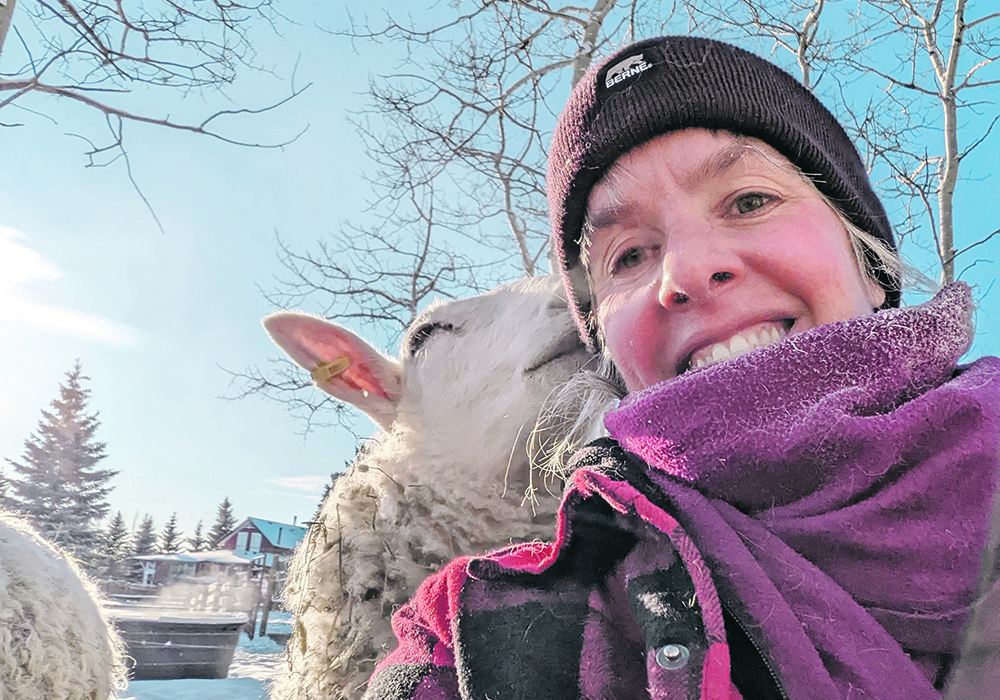Emily Carr University of Art and Design works with an Alberta sheep producer on a project to create new uses for fleece
Industrial design students at a British Columbia university will try to help reverse a decades-long problem facing the Canadian sheep industry by developing new products from fleece that would otherwise go to waste.
There is an abundance of wool in Canada that is not being used for anything, said sheep farmer Tara Klager of Providence Lane Homestead near Cochrane, Alta.
“In fact, quite often it’s a liability to producers.”
She approached Helene Day Fraser, assistant dean of industrial design at Emily Carr University of Art and Design in Vancouver, to work with students to try to turn things around by creating new uses for fleece.
“I think we can have an opportunity to build something that’s uniquely Canadian, and for this initiative, uniquely western Canadian,” said Klager.
“I think we have a lot of incredible people here, and the resources that we can put our hands on here is outstanding … and I know that our designers and our artists and our students are inspiring, and they have a lot of energy and they’re thinking all kinds of new thoughts, so let’s get everybody together and see what happens.”
Industrial designers help create the forms and features of the mass-produced, manufactured products and devices that make up the modern world, said Day Fraser.
“If you look around the room, an industrial designer would have played a hand in it, whether it’s a doorknob, a lamp or window frame, or a chair.”
About 15 industrial design students who are in their third year at Emily Carr will be working with fleece sourced from Klager’s farm to come up with fresh ideas for potential products, she said.
“We never know what it’s going to be.”
The collaboration has been titled With Wool: The Art of the Possible, said Klager. It aims to bring together everyone from producers, processors, designers and engineers to creative thinkers, problem solvers, innovators and fine artists, she said.

“We don’t always get an opportunity to talk to each other. Fine artists and urban-based designers don’t necessarily have an opportunity to come up to the farm and see what it takes and how the sheep live and the material in its raw state, so it’s trying to close some of those gaps of knowledge.”
Farmers in turn don’t typically get to see how designers work to better understand what they need, said Klager.
“Are there ways that we can, for instance, feed our sheep so that the fleeces don’t get as dirty, so they don’t need to have as much washing done and they’re more readily available to be used without the same level of processing, which, of course, would make it more accessible and have a lower price point?”
Day Fraser co-founded the university’s Material Matters research centre, which has worked on projects ranging from 3D-printed textiles to wearable computing. She said the design process for the fleece will involve students learning about things such as the role sheep play in the regenerative farming practised by Klager.
It will include the care of sheep and animal welfare, “and how that moves into different wool products across the Prairies,” said Day Fraser, who is also an associate professor of design. It will help students think beyond traditional uses such as yarn or clothes to consider possible contexts to inspire ideas for new products they could prototype, she said.
Klager pointed to existing products being offered to consumers ranging from wool pellets, which provide an environmentally friendly way add nitrogen to gardens, to fully biodegradable funerary urns to hold cremated human remains. The goal is to reinvigorate the perception of wool by both industrial designers and consumers, she said.
“Wool is an incredible material. It’s entirely biodegradable, its thermal qualities are amazing, it can be turned into any number of things, so what can we do to encourage that kind of innovative thinking, and that research and development of those products, so that farmers aren’t burying it, burning it or sticking it into their barn walls, and there is an actual market and a revenue stream for them?”
Although producers must shear sheep regardless of what market exists for wool, what they earn can sometimes be so low that it doesn’t even cover the cost, said Klager. “There’s no market, they can’t sell their fleeces because the broker isn’t always even buying them, so what can we do to create value-added products and interest in Canadian wool?”

There is a lack of rural infrastructure and investment in the wool industry in much of Canada, which has prompted efforts like the Campaign for Wool Canada and various fibreshed groups, she said.
Similar to concepts such as watersheds, fibresheds are geographic regions involving fibre that connect everyone from farmers to processers and consumers.
“There are a lot of people who are really passionate about the potential of Canadian wool and the possibilities of Canadian wool,” said Klager.
“And I just want people who feel that way to have an opportunity to talk to each other and to build a community, whether they’re a producer, a small-scale farmer like myself, or they’ve got 100, 200 or 400 sheep.”
She wants these conversations to include as many people as possible to see what might happen.
“I think if we’re able to do that, if we’re able to put the right materials in the right hands with the right pairs of eyeballs looking at them, I think the art of the possible is more than possible. I think it’s inevitable.”
















